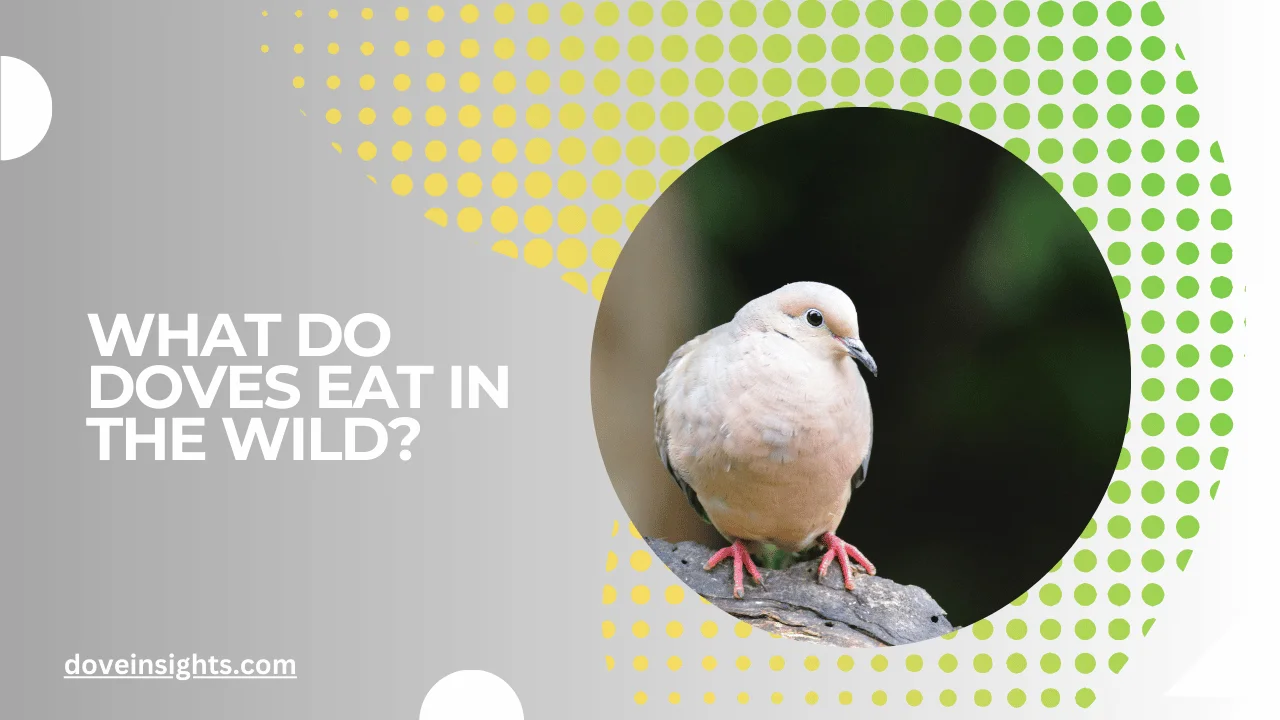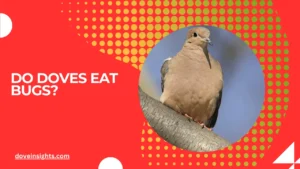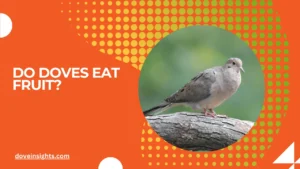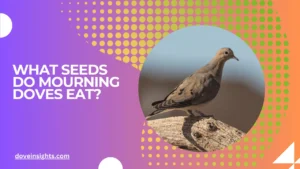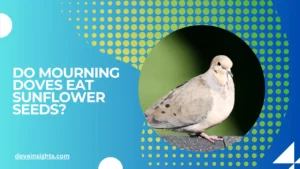Have you ever watched a dove pecking at the ground and wondered, “What exactly are they eating?”
Despite their gentle demeanor and soothing coos, doves have fascinating feeding habits that reflect their adaptability and survival instincts. As a crucial link in the ecosystem, understanding what doves eat in the wild provides insights into their behavior, habitat, and role in maintaining ecological balance.
Doves are not just seed eaters; their diet is far more diverse and dynamic than most people realize. From grains to insects, the foods they consume vary based on availability and the environment they inhabit.
This adaptability allows them to thrive in urban parks, dense forests, and open fields alike. Their feeding patterns also influence the spread of plant species, contributing to biodiversity in subtle but important ways.
In this article, we’ll delve into the wild diets of doves, exploring the types of food they consume, how they forage, and the nutritional needs that sustain their daily lives.
Whether you’re a bird enthusiast, a curious observer, or someone looking to attract doves to your yard, this guide will equip you with a deeper understanding of these graceful creatures and their dietary habits.
Contents
The Primary Diet of Wild Doves
Doves are primarily granivores, meaning their diet largely consists of seeds and grains. Some of their favorite foods include:
- Grass Seeds: Doves forage for seeds from grasses such as millet and wild oats, which are abundant in their habitats.
- Cereal Grains: In agricultural areas, they consume grains like wheat, corn, and barley, often scavenging leftover crops.
- Weed Seeds: Many dove species play a critical role in controlling weeds by eating seeds from plants like dandelions and ragweed.
While seeds are a staple, they occasionally supplement their diet with other food sources to meet their nutritional needs. This includes fruits, berries, and even small insects.
Foraging Behavior and Techniques
Wild doves are ground foragers, meaning they search for food on the ground rather than in trees or bushes. Their foraging behavior is characterized by:
- Scratching and Pecking: Doves use their beaks to peck at the soil and scratch the ground lightly to uncover seeds and grains.
- Flocking Behavior: Often, doves forage in groups, which provides safety in numbers and allows them to locate food more efficiently.
- Time of Day: Most doves prefer to feed early in the morning or late in the afternoon when temperatures are cooler.
Their foraging techniques are not just about survival; they also impact the environment by scattering seeds, which aids in plant propagation.
Seasonal Variations in Dove Diets
The availability of food for doves changes with the seasons, and their diet adjusts accordingly:
- Spring and Summer: During warmer months, doves have access to a wider variety of seeds, fresh fruits, and insects.
- Autumn: Harvested fields and natural landscapes provide an abundance of grains and seeds.
- Winter: In colder climates, doves rely on whatever food is available, often scavenging for fallen seeds or visiting bird feeders.
These seasonal shifts highlight their adaptability, ensuring they can survive in a wide range of environments and weather conditions.
The Role of Water and Minerals in Their Diet
While food is crucial, water and minerals are equally important for a dove’s survival:
- Hydration: Doves need fresh water daily for hydration and digestion. They are often found near ponds, streams, or bird baths.
- Grit Consumption: To aid in digestion, doves ingest small stones or sand, known as grit, which helps grind food in their gizzards.
- Mineral Sources: Wild doves sometimes consume salt or mineral-rich soil to supplement their diet.
These additional dietary components ensure their overall health and reproductive success.
How Human Activity Influences Dove Diets
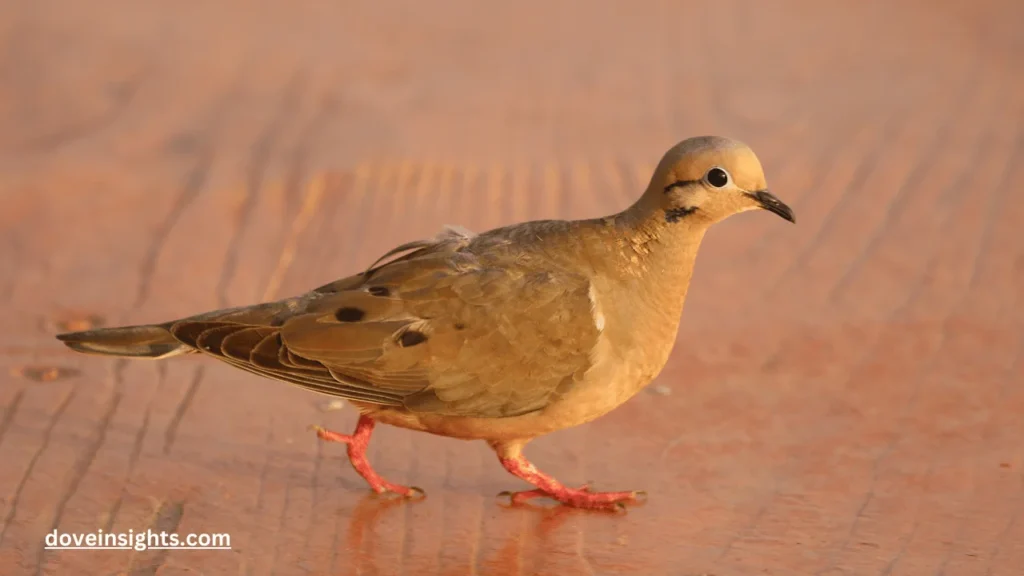
Human presence has significantly altered the diets of wild doves in several ways:
- Urban Feeding: In cities and suburbs, doves often rely on bird feeders, discarded food, and accessible trash.
- Agricultural Impact: Farming practices provide easy access to grains but can expose doves to pesticides or competition with other animals.
- Habitat Alteration: Urbanization and deforestation can limit natural food sources, forcing doves to adapt to human-modified environments.
By understanding how human activities affect dove diets, we can take steps to minimize negative impacts and support their natural feeding habits.
Conclusion
Recap Main Points: Doves are resilient and adaptable birds with a diet that primarily consists of seeds, grains, and occasional insects.
Their foraging behaviors, seasonal dietary changes, and need for water and minerals are all critical to their survival. Human activity, while providing new food sources, can also disrupt their natural feeding patterns.
Final Thoughts: Learning about what doves eat in the wild reveals their essential role in the ecosystem. From controlling weed populations to spreading plant seeds, their dietary habits contribute to ecological balance.
By understanding their needs and behaviors, we can coexist harmoniously with these gentle birds, ensuring their survival for generations to come.
FAQ’s
What is the primary food source for wild doves?
Wild doves mainly eat seeds and grains, but they also consume fruits and small insects occasionally.
Do doves drink water every day?
Yes, doves require fresh water daily for hydration and to aid in digestion.
Why do doves eat small stones or sand?
Doves ingest grit to help grind and digest their food in their gizzards.
Do doves eat insects?
While not a primary food source, doves occasionally eat insects for additional protein, especially during the breeding season.
How do seasons affect dove diets?
Seasonal changes influence food availability, with doves eating more fruits and insects in summer and relying on seeds and grains in winter.
What foods attract doves to my yard?
Doves are attracted to birdseed mixes, particularly those containing millet, sunflower seeds, and cracked corn.

